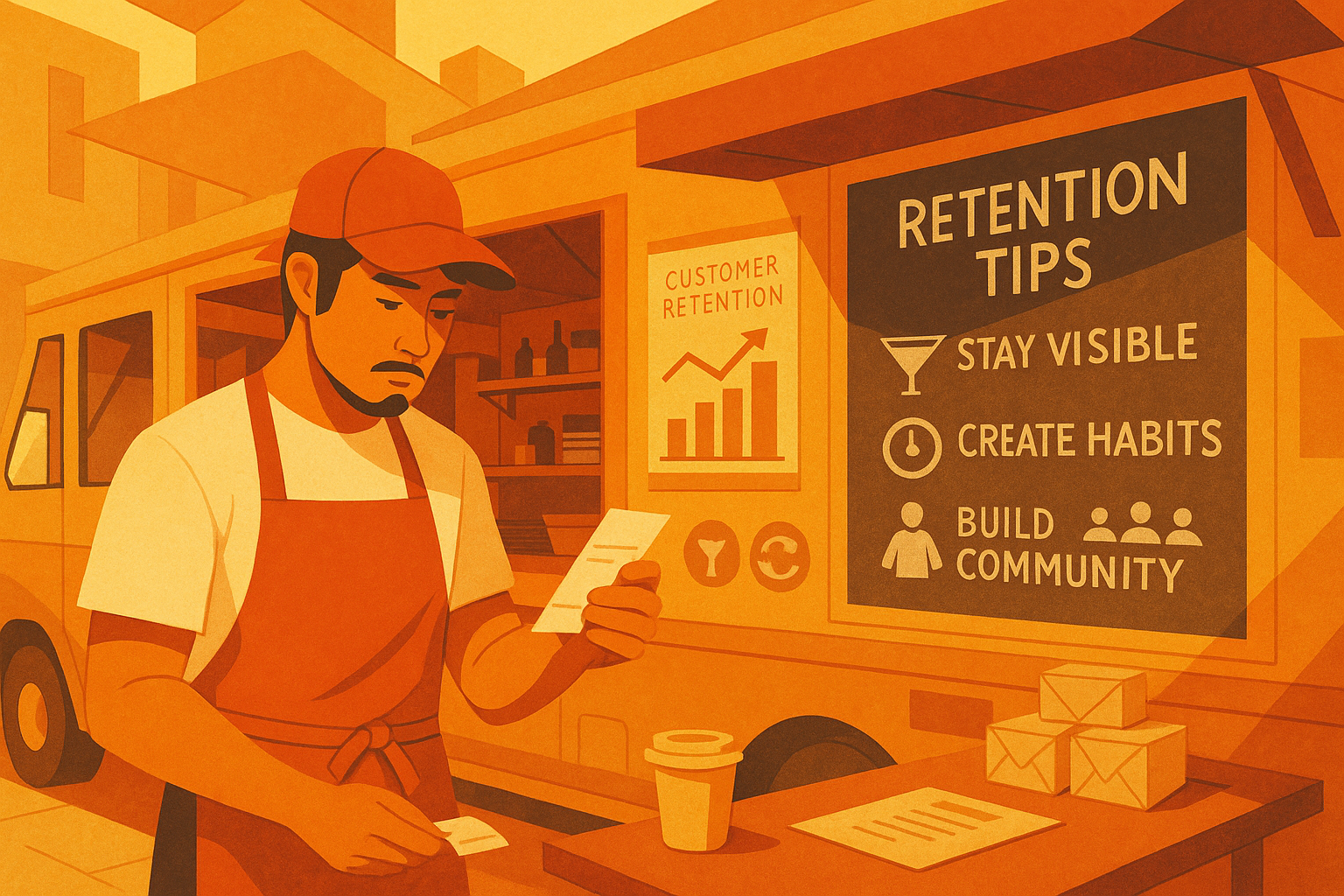Picture this: someone tries your homemade jam at the farmers market, raves about how it's the best they've ever tasted, buys three jars, and promises to be back next week. They never return. Sound familiar?
Here's the counterintuitive truth about food businesses: loving your product doesn't guarantee customer loyalty. Your jam might be sitting in their pantry right now, half-finished, while they bought grocery store jam twice since then simply because they forgot you existed.
Welcome to the food business retention challenge that nobody talks about. While tech companies worry about daily active users and subscription services track monthly churn, food businesses operate in a completely different universe where exceptional products can have terrible retention rates.
Why Food Business Retention Is Different
Memory fades between purchases. When someone finishes your salsa, they might genuinely intend to buy more. But three weeks later at the grocery store, they grab the familiar brand that's right at eye level. Out of sight, out of mind.
Frequency doesn't equal loyalty. A customer who buys your pasta sauce every three months isn't necessarily less loyal than one who buys coffee daily. Food consumption patterns are inherently irregular and seasonal.
Taste preferences shift constantly. Customers don't abandon your bakery because they suddenly hate your croissants. They try a new diet, develop a health concern, or simply want variety.
Location dependency hits hard. Farmers market businesses lose customers who move, change weekend routines, or simply forget which Saturday you're there.
Seasonality destroys traditional metrics. A hot soup business might have 90% retention during winter and 10% during summer. Both numbers are meaningless without context.
How to Calculate Customer Retention Rate for Food Businesses
Customer Retention Rate (CRR) = ((E - N) ÷ S) x 100
- E = customers at end of period
- N = new customers gained during period
- S = customers at start of period
Food business considerations:
- Choose periods that match buying patterns (season-to-season for seasonal products)
- Define "customer" clearly (anyone who's bought? bought twice? bought recently?)
- Account for natural buying cycles (pumpkin bread customers who return next October)
Example: A farmers market vendor starts the season with 150 regular customers, gains 75 new repeat customers, and ends with 180 total repeat customers.CRR = ((180 - 75) ÷ 150) x 100 = 70%
Top 5 Retention Strategies That Actually Work
1. Stay Visible Between Purchases
The visibility gap destroys food businesses. Your product isn't used daily like toothpaste.
Tactics that work:
- Email recipes using your products (memory, not selling)
- Social media cooking tips and seasonal inspiration
- Business cards that double as recipe cards
- Magnets with your market schedule for refrigerators
2. Increase Usage Frequency
Focus on how often customers use your products, not just how often they buy.
Proven approaches:
- Recipe education: show multiple ways to use your hot sauce
- Pairing suggestions: which wines go with your cheese
- Seasonal adaptation: summer salsa in winter chili recipes
- Cross-product inspiration: how your spice blend works in different cuisines
3. Build Purchasing Habits
Create routine around your products and presence.
Habit-forming strategies:
- Subscription or Community Box models for regular deliveries
- Consistent farmers market presence (same time, same place)
- Limited-time offers that create urgency
- Seasonal product launches customers anticipate
4. Master the First Purchase Experience
Many customers want to return but can't remember your business name or location.
First-purchase essentials:
- Clear follow-up with storage tips and next market date
- Start with one product, introduce others gradually
- Seasonal communication when you return after breaks
- Make your contact information memorable and accessible
5. Build Community Beyond Transactions
Food is inherently social. Connected customers stay longer.
Community-building tactics:
- Educational content about ingredients and techniques
- Behind-the-scenes transparency about sourcing and process
- Participation in local food events and collaborations
- Recipe sharing that builds expertise and engagement
5 Food Business Retention Metrics That Actually Matter
Track metrics that reflect how people actually consume food:
1. Purchase frequency by product type
Condiments: quarterly. Baked goods: weekly. Specialty items: annually. Set different retention expectations for each.
2. Seasonal retention rates
Compare fall-to-fall or summer-to-summer for seasonal businesses. Month-to-month comparisons are often meaningless.
3. Product variety per customer
Customers who buy multiple products have higher retention. Track cross-selling success.
4. Recipe engagement correlation
Customers who engage with cooking content have dramatically higher retention rates.
5. Referral generation rate
Food businesses rely on word-of-mouth. Track customers who bring friends—they're your most valuable.
When Low Retention Isn't Actually a Problem
Some food businesses naturally have low retention rates:
Special occasion businesses: Wedding cakes, holiday catering—customers don't need services frequently
Tourist-heavy locations: Farmers markets in vacation areas serve mostly one-time visitors by design
Seasonal specialty products: Pumpkin spice, holiday cookies—customers wait for next season
Premium positioning: Ultra-high-end artisan products might be once-yearly purchases
The Food Business Retention Reality Check
Customer retention isn't just about keeping customers—it's about staying relevant in their food choices over time. This requires understanding that food consumption is personal, emotional, and constantly evolving.
The most successful food businesses focus on becoming part of customers' food identity rather than just another product option. When customers think "I'm someone who shops at farmers markets" or "I'm someone who values artisan ingredients," your business benefits from that identity alignment.
The goal isn't arbitrary retention percentages—it's building sustainable relationships with customers who value what you create and will continue choosing your products as their needs evolve.
Your amazing jam customer who disappeared? They might return in six months when they remember how much they loved it, or recommend you to a friend, or seek you out for holiday gifts. In food businesses, retention works on longer timelines and through more complex relationship patterns than traditional business metrics capture.





